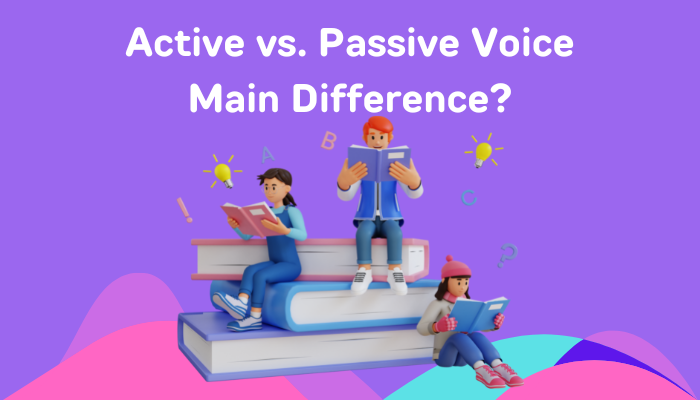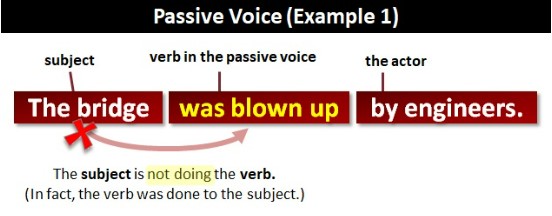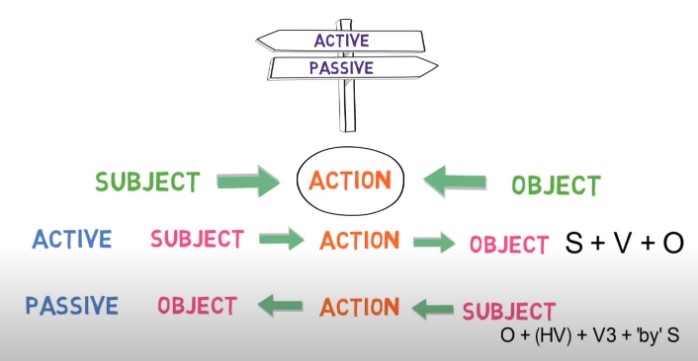In English, how a sentence is phrased can drastically change its meaning and impact on the reader. One common grammatical decision writers face whether to use the active or passive voice. Both have benefits and drawbacks; choosing the wrong one can confuse or disinterest the reader.
The sentence’s subject acts in the active voice, while the subject receives the action in the passive voice. This difference can greatly affect the tone and clarity of a sentence.

For example, an active voice sentence such as “John hit the ball” is direct and emphasizes the subject’s agency, while a passive voice sentence like “The ball was hit by John” places more importance on the object receiving the action.
Regardless of which voice a writer chooses, it’s important to consider the context and purpose of their writing to convey their message effectively. Understanding the nuances of each voice can help writers make informed decisions when crafting their sentences.
What is Voice?
English grammar can be confusing. We all learned the language in our early days. It might have been years since we brushed up on our grammatical knowledge. In the literature, there are five unique and different aspects of verbs.
These can also be called the properties of the verb. They are voice, tense, mood, person, and number. All of these properties are crucial when forming sentences. The voice in a sentence describes the relationship between the object and the subject of the verb.
Active Voice VS Passive Voice: Difference
Learning the difference between the two forms of grammatical voice is necessary to make ideal sentences. Active and Passive voices form the majority of our language. You can create carefully curated documents with Active and Passive voice knowledge. Here is some more clarity about the two unique types of grammatical voice.
For Ex: Active voice is a sentence in which the subject acts, for example, “The dog bit the mailman.” On the other hand, passive voice is a sentence in which the subject receives the action, for example, “The dog bit the mailman.” The main difference between the two is the sentence’s focus; active voice emphasizes the doer of the action, while passive voice emphasizes the action or the receiver.
What is Active Voice?

The technical definition of Active voice could be clearer. It is defined as when the subject performs verb actions in a sentence. The description shows some light on the use of Active voice.
It is quite straightforward and is beneficial for inaccurate communication. Using an Active voice in sentences has a direct and clear message. Here are a few examples to give you a better idea of the use.
All three sentences make use of essential Active voice. You can identify the sentence effortlessly through the definition. The subject and action keep changing in every sentence. The layout of the sentences is the same in every line.
What is Passive Voice?

A Passive voice refers to the situation when the verb acts on the subject. The words can be confusing to understand at first. It is quite simple and the opposite of an Active voice. Passive voice sentences need to be clarified.
They can be used to convey the same message uniquely. Active voice is the straightforward version, but Passive voice twists the language. The sentences can be instantly recognized because they are a little complicated to read. We will convert the same examples given above so you can understand the difference better.
In each sentence, the meaning remains the same. The way of forming the sentence is wholly changed through Passive voice. You can notice that the Passive voice is usually accompanied by the preposition “By.” It creates a significant part of a sentence but is not compulsory. The preposition depends on the situation portrayed in the sentence.
Active And Passive Voice: Structure
Knowing the structure of your sentence is crucial to have a solid grip on the language. The text structure can be beneficial to users. You can easily convert sentences from one type of voice to another when you learn it. The overall structure of the two grammatical views is explained below.

Active Voice:
Active voice sentences are quite straightforward. There are three aspects to any punishment. First, you need to identify them to create sentences. These 3 are the subject, action, and verb. The entire grammatical voice theory is based on them. Active voice sentences use the three aspects with the subject leading, followed by the verb, and then the action. Finally, it satisfies the definition of the voice type.
Grammatical Structure: Subject + Verb + Object
Passive Voice:
Passive Voice sentences are a little twisted. They also follow the same three aspects of the sentence. In most cases, a preposition is also added. The key is to know these three aspects by heart. In Passive voice sentences, the order is an object, 3rd form of the verb, the preposition, and the subject.
Note – You can easily convert sentences interchangeably through the structure. It is critical information to keep track of the language. Shift the order of sentences to change the voice type.
Grammatical Structure: Object + form of “to be” + past participle of main verb or Object + modal verb + be + past participle of main verb
Active Voice VS Passive Voice: Example Sentence
Example 1:
Active Voice: Katey changed the tires of her car.
Passive Voice – The tires of the car were changed by Katey.
Example 2:
Active Voice – Ross ate everything on his plate.
Passive Voice – Everything on the plate was eaten by Ross.
Example 3:
Active Voice – The teacher answers all the questions.
Passive Voice – All the questions are answered by the teacher.
When to use Active voice and use Passive Voice?
It is essential to know when you should employ either. They form a considerable part of our diction. Both written and spoken language utilize the grammatical voice. Active voice sentences sound quite clear and help convey a message effectively.
On the other hand, the Passive voice could be clearer in some cases. We recommend not using the Passive voice because you want to sound fancy. Depending on the situation, it can give a wrong impression to the person listening.

An Active voice helps you to state clear facts and convey messages easily. A Passive voice is helpful when you need to be vague. Passive voice can sometimes seem weaker in comparison.
Ideally, it all boils down to the situation you choose. It is the reason why we need to know when to use them. Knowing your grammatical voice can be helpful in the long run.
Using an Active voice is always a good idea. It shows that you are confident, calm, and have your facts straight. Avoid using Passive voice for meaningful communication. Instead, use it only when you can’t form a sentence in an Active voice.
Related Read:
Grammarly Review
Grammarly vs ProWritingAid
Ginger Grammar Checker Review
Frequently Asked Questions:
Active voice is used when the sentence’s subject is acting. Passive voice is used when the sentence’s subject receives the action. In most cases, active voice is generally considered clearer and more direct.
Active voice sentences have the subject acting, while Passive voice sentences have the subject receiving the action. To identify Passive voice, look for a form of the verb “to be” (is, was, were, etc.) and a past participle of the main verb (such as “written” or “driven”). If present, the sentence is likely in Passive voice.
For Active Voice:
1. Subject + Do/does+ not + V1 + Object
2. Does+ Subject+ V1+Object
For Passive Voice:
1. Object + is/am/are+ not + V3+ by Subject
2. Is/am/are + Object+ V3+ by subject
Conclusion:
Active and Passive voices form a considerable part of our vocabulary. The guide can be useful for users to learn the difference between the two effectively. Follow the pattern of Active voice and Passive voice to learn more about sentence composition. Use our tips in real life to become a better communicator.

Myself Victoria, author and Founder of Grammar.ltd, reaching 24, passionate about pursuing my degree in English literature; have been always sincerely sharing my most genuine views through my blogs.